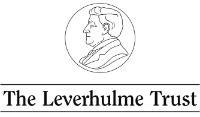Hero of Alexandria and his Theatrical Automata
 This research project, funded by a Leverhulme Trust research project grant (PI Dr Ian Ruffell, Humanities/Classics; Co-I Dr Euan McGookin, Engineering), is a study of Hero of Alexandria's treatise on automata (first century CE): its historical, technical and theatrical context, the practical and technical viability of such automata, and the influence of these devices on developments in Renaissance automata and early robotics. Hero's automata, one mobile and one stationary, are inspired in architectural and narrative terms by Greek theatre, and constitute an important moment in theatrical reception. The work comprises four related strands: re-edition with commentary of Hero's text; experimental reconstruction of the automata; evaluation of them in performance; monograph setting them in their historical and technical contexts.
This research project, funded by a Leverhulme Trust research project grant (PI Dr Ian Ruffell, Humanities/Classics; Co-I Dr Euan McGookin, Engineering), is a study of Hero of Alexandria's treatise on automata (first century CE): its historical, technical and theatrical context, the practical and technical viability of such automata, and the influence of these devices on developments in Renaissance automata and early robotics. Hero's automata, one mobile and one stationary, are inspired in architectural and narrative terms by Greek theatre, and constitute an important moment in theatrical reception. The work comprises four related strands: re-edition with commentary of Hero's text; experimental reconstruction of the automata; evaluation of them in performance; monograph setting them in their historical and technical contexts.
Context
Hero of Alexandria is one of the most well-known of ancient technical and mathematical writers, not least for his description of a working steam engine, but he has been little studied in detail. Since the standard Teubner edition of Schmidt, over a century ago, there have been no monographs and few substantial contributions. Otherwise, Hero has been relegated to walk-on roles in general histories of technology or in discussions of technology and economics. The treatise on the making of automata (peri automatopoiētikēs) has been particularly neglected. Attention has focused instead on his work on ballistics and mechanics, or on other devices, notably the surveying instrument, dioptra. The automata have been regarded largely as toys and left out of account, even in recent general histories of automata. With growing interest in Greek technical writing (especially medicine) and increased awareness of Greek technical devices, not least the famous Antikythera mechanism (which calculated astronomical phenomena), the time is ripe for a reassessment of Hero.
Hero's treatise purports to give instructions on the creation of two types of self-powered automaton. Both present displays within an architectural frame and are powered by a falling weight. One is mobile (optionally using a prepared runway) and displays a limited narrative. The other is a stationary device, which presents a more extended narrative. Both the displays and their setting stand in some relationship to Greek theatre. This project combines traditional philological approaches with experimental and performance data in order to reassess the nature, function and contexts of Hero's automata.
Objectives
The objectives for this research are to:
- build functional automata, based on a fresh analysis of the Greek text, with detailed and reproducible plans, and to identify their practical capabilities;
- establish, through the process of their reconstruction, whether the work is a technical manual, exaggeration or jeu d'esprit, and its likely function and readership;
- explore the possibilities and limits for the automata in performance and investigate whether their use by modern practitioners can help assess their role in antiquity;
- provide an updated edition of the treatise, with translation and commentary, both to inform the experimental and performance phases and to render this text more accessible to scholars and the wider public alike;
- relate Hero's automata to the continuing Greek and Roman theatrical traditions and establish the value of the treatise as evidence both for the reception of Greek tragic theatre in the first century CE and the contemporary traditions of theatre architecture;
- set the treatise on automata-making within the context of Hero's other mechanical writing, not least those that also discuss automata, and in the context of Greek mechanics and writings on automata more generally;
- demonstrate how the practice of automata-making was related to mathematics and philosophy and formed part of a broader set of technical discourses and practices, such as medicine;
- investigate the legacy of Hero and his automata in Byzantine, Renaissance and subsequent technology and performance;
- explore established and emerging technologies to establish best practice for the integration of philological, experimental and performance research into a rich data environment that provides users with a flexible and accessible approach to this material.
Significance
Hero's work provides an important first chapter in the study of automata and other analogue precursors of today's robotics. This research project will provide a comprehensive account of automata in antiquity and be the first to investigate the practicality of the automata in Hero's treatise in a systematic fashion, by integrating experimental and performance methods with traditional philology. It will also consider the place of the Heronian devices in the Byzantine, Renaissance and early modern histories of automata, both in terms of the manuscript transmission and interpretation of the treatise and in terms of the influence of Heronian ideas on the automata of those periods.

